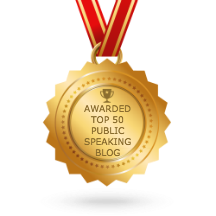I have been coaching non-native speakers of English to improve their pronunciation for almost four decades. I was trained by Arthur Lessac in the Lessac Method of Voice and Diction. Thanks to Arthur’s fine training and method, I can quickly and easily identify the sounds of English that non-native speakers need to learn. It’s also easy for me to teach non-native speakers how to pronounce those sounds in just a few minutes. Very quickly, my clients learn the mechanics of using their teeth, tongue and lips to form the sounds they need to “reduce” their accents.
Here’s the hard part. Non-native speakers must not only learn to pronounce the sounds of English, they must integrate those sounds into their speech. They must be able to use those sounds when speaking English in their daily conversations. It takes regular practice to actually integrate the sounds into their speech. It also takes considerable time to develop the muscle memory needed for correct pronunciation to feel natural.
My job is first to identify the sounds a particular client needs to learn to modify or reduce his accent and then to teach him to make those sounds. The client’s job is to 1) practice making the sounds, 2) articulate those sounds in words, sentences and reading material, and 3) to integrate them into daily spoken speech.
Here are some steps for learning, practicing and integrating sounds of English into daily speech:
- Practice only one sound at a time. Concentrate your attention on one sound that will make your speech clearer. Give plenty of time to that one sound, perhaps a week, even two weeks.
- Practice making the sound alone to create muscle memory. Repeat a series of that sound several ways -slowly, fast, in sets of three, with eyes open, eyes closed, sitting, standing and walking. Feel the action of your teeth, tongue and lips as they work to make the sound.
- Practice words that have the sound at the beginning, middle and end. Create lists of words that contain that sound. Say your list aloud daily.
- Listen to a talk radio station for words that have the sound and repeat the words as you hear them spoken on the radio.
- Practice reading new material aloud every day. Read to make sure you are articulating the sound you are focusing on.
- When you are speaking, notice how that sound starts to happen more often in your speech. When you can use that sound most of the time when speaking, select another sound and start the process again.
This simple set of steps will gradually transform your speech to be more clear and understandable. Ten to fifteen minutes a day is all you need to improve your pronunciation. Why not start now?
If you think you might want help to modify your accent, reduce your accent or achieve clearer pronunciation, I’d be pleased to speak with you personally. Visit this page for details. Click here to request a complimentary coaching call so we can talk about your goals and situation and determine if my program is right for you.




